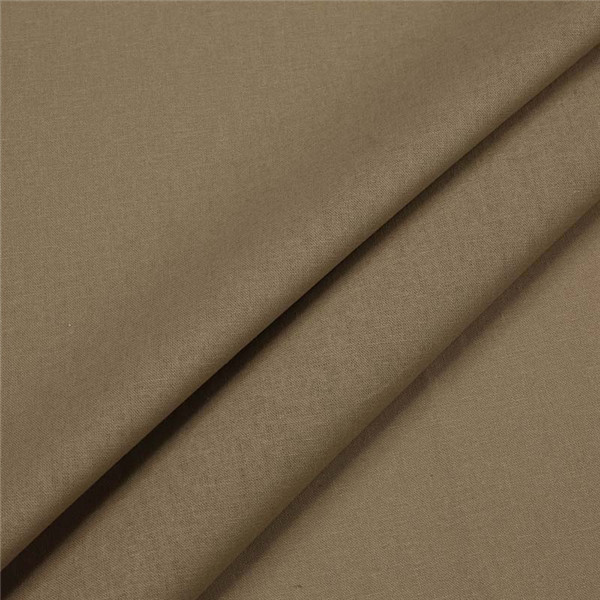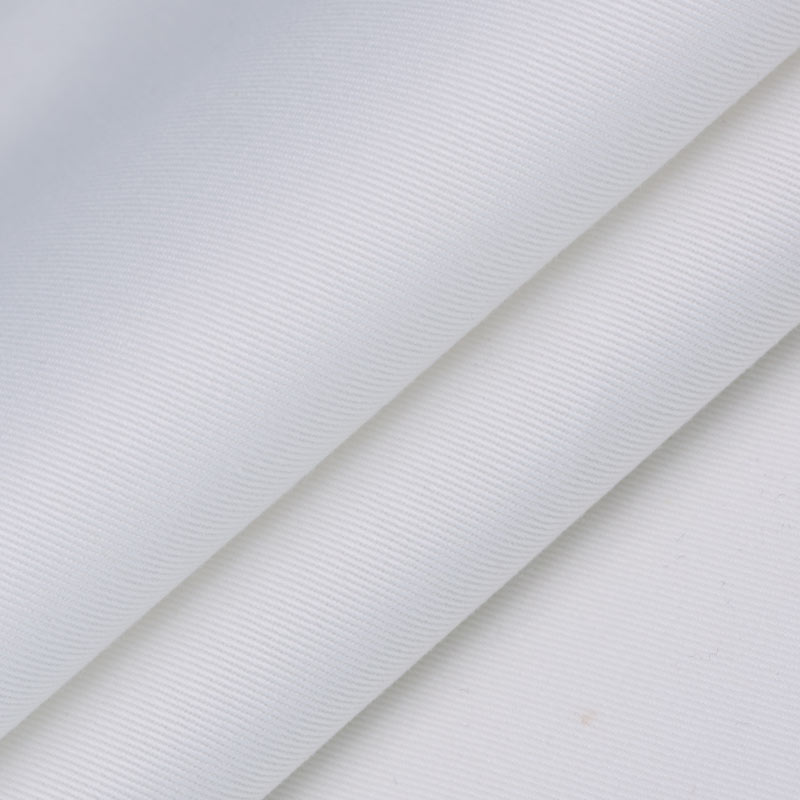The checked fabric Madras was adopted by the affluent elite of 1950s America, and has been an "old-money" wardrobe staple ever since. But the fabric's origins go back to a South Indian fishing village, writes Kalpana Sunder.
What connects a lightweight, checked cotton fabric in earthy hues, popular around the world, and a city on the South Indian coast? For centuries, local fishermen and farmers of the sleepy fishing village of Madrasapattinam (later called Madras, and now a major city called Chennai) wore a muslin fabric hand-woven in a rainbow of checks, as lungis (like sarongs) that were suited to the hot and humid weather of South India. 96*56/32/2*200d Plain Fabric

- The floral fabric that was banned
- The stories hidden in an ancient craft
- An ancient Japanese method of recycling
The hand-woven fabric had the same pattern on both sides, usually featured primary colours created using vegetable dyes, which would bleed when washed, with the colours gradually blending. It was also used in handkerchiefs. It was an environmentally-friendly and sustainable fabric that was soft, and had a distinctive, slightly bumpy texture. The long process of hand weaving gave the fabric its rustic appeal.
"The true definition of Madras check is a pure cotton yarn-dyed plain-weave cloth with a minimum two-colour irregular pattern and, most importantly, woven in Madras with pure Indian cotton. Originally and to this day the best Madras is woven by hand," says Prasan Shah, who runs the Original Madras Trading Company, a family-owned business. Shah's grandfather established the company in 1973, when he arrived in New York City from Madras with a trunk full of Madras checks.
Sabita Radhakrishna, Chennai-based textile revivalist, tells BBC Culture that the colonisation of India began and ended with textiles. "The East India Company chose Madras because of its handloom fabrics. When the Dutch reached Madrasapattinam in 1612, they started trading the calico cloth and this led to its mass production."
In the mid-17th Century, Madras became an important commerce hub for the British East India Company. The firm's Francis Day found potential in the handwoven, vegetable-dyed fabric, and gave weavers an incentive to produce the lightweight fabric for export. They provided a 30-year exemption from duties for Indian weavers, so as many as 400 weavers settled in Madras.
Some have speculated that Madras locals took inspiration from tartan weaves worn by the Scottish regiments stationed as peacekeeping forces in the 1800s in the city, and adopted it into the local aesthetic. Scottish clans had long worn tartan weaves to represent their identity, with each clan having its unique pattern. But in fact this patterned fabric had existed for hundreds of years before the arrival of the British.
"The weaving of cotton textiles in South India was renowned for centuries prior to the British building a harbour in Madras in the 18th Century, but it was this port and the British East India Company that led to textiles from Madras being traded throughout the modern world," says Shah.
Chennai-based textile researcher, Sreemathy Mohan, says that the Coromandel coast was always renowned for its fabrics, especially hand-woven checked fabrics. "In Tamil culture, a grid has always been a powerful symbol [for example in] kolams [designs drawn on the floor]. Even deities in our temples have been clothed in checked fabrics. Wedding sarees in many communities have been checked, and they were hand-woven usually only in the colours of red, blue, white and yellow.
"Woven by handloom on muslin cloth, these simple checks were known by different names – Madras checks, real Madras handkerchief, George cloth (after Fort St George in Madras), Guinea cloth or bleeding Madras. In the days of simple pit looms, this was just alternating colours used in warp and weft," says Mohan. Its smell "of oil and vegetable dyes" was also distinctive.
In her book Asian Embroidery, art historian Jasleen Dhamija dates the first export of checked fabric under the name "Madras" to 1660, when British merchants used the term Real Madras Handkerchief, or RMHK, to describe 8m-long bales of fabric that could be cut into three square kerchiefs to evade a tax. RMHK cloth has been traded with West Africa since the 16th Century. Portuguese slave traders bartered the cloth in London in exchange for enslaved people to send to the Americas.
It was also taken to African colonies like Nigeria, where RMHK became known as "Injiri" meaning "real India". For the Kalabari community there, it became the ceremonial gift for newborns, and was also used to adorn the dead. In countries like Ghana and the Ivory Coast, brides wore dresses made from it in the 18th and 19th Centuries.
Madras has also been popular in the Caribbean for centuries, and it is thought to have been brought there by indentured servants from Madras in the first half of the 19th Century. The fabric was soon adopted by many Caribbean islands, and remains popular in the region today.
"The checked material was usually only in colours like red, green and blue," says Radhakrishna, "and is also closely connected to the Telia rumals [a method for the oil treatment of yarn] from Andhra Pradesh, ikat textiles used as scarves by Hajj pilgrims and many Arab traders who took the checks to Mecca. Since they were dyed using natural dyes like indigo and turmeric, the colours were not stable, and every time they were washed the colours looked different, which gave rise to the name Bleeding Madras."
The fabric eventually reached the US. Elihu Yale, who was the Governor of Madras at the time, and after whom Yale University was named, donated money, books and bales of beautiful Madras checks to the college. In 1897 Sears, the mail-order catalogue company, published a catalogue with a selection of Madras shirts for their buyers. This made the fabric popular in the US in the form of button-down shirts, trousers, and sport coats.
Many Americans wore Madras on vacation, and it soon became a fashionable status symbol in the US. Slowly, it became a wardrobe staple for Ivy League students, and by the 1950s it had become synonymous in the US with affluence and recreation, and was considered the gentleman's go-to look. In Mad Men, advertising executives are shown wearing Madras check sports jackets and shirts.
In 1958, William Jacobson, a leading textile exporter, bought the fabric from Captain C P Krishnan of Leela Lace and sold it to Brooks Brothers, who launched a Madras check line for men and women, but forgot to mention that the fabric would bleed on wash and had to be washed delicately in cold water. In a clever PR pivot, the fabric was soon re-cast as the miracle fabric, "guaranteed to bleed".
Changes in trends, the 1980s switch from handlooms to power looms and colour-fast technology all contributed to the slow disappearance of the original Bleeding Madras fabric. But mass production led to the appearance of versions of the checked fabric everywhere, partly because Madras checks lacked a denomination of origin or geographical indication that would have made it illegal to call fabric produced outside this region as Madras Check. Many imitation plaids that were machine-made were sold all over the world.
Over the years, global fashion brands and designers like Ralph Lauren, Prada and Gucci have used Madras checks in their collections.
Meanwhile in India, Madras is enjoying a new fashionable status. Designer Aneeth Arora of Pero, who creates sustainable clothing using Indian craftspeople and western designs, has incorporated Madras in her work. Designer Chinar Farooqui with her label Injiri uses handwoven textiles and traditional crafts from across India, and has used Madras checks extensively in her creations. And the Original Madras Trading Company is now stocked around the world.
Madrid-based fashion designer and textile revivalist Kavita Parmar, through her IOWEYOU Project, makes garments that can be traced back to their weavers without an intermediary. She uses master tailors in her atelier in Spain to transform simple checked lungis into elegant jackets, shirts, skirts and dresses. Each product has a QR code, which, when scanned, shows the artisans and craftsmen who created the item.
"Madras check is a fabric I grew up with, as my dad would come home from work and change into his favourite lungi," says Parmar. "What I love about this beautiful, simple, iconic fabric is that it ages beautifully. This humble fabric made from a simple weave out of a basic cotton yarn has travelled the world and been adopted by many cultures – Africa, USA, Japan – and still remains modern and relevant. I am mad about Madras. We owe it to our heritage to remind the world where the authentic Madras comes from and give authorship back to our talented handloom weavers."
What is ironic is that, in its place of origin, the now fashionable material is still worn mostly by manual labourers or as casual clothing at home. "Madras checks have inspired a host of things," says Radhakrishna. "Silk sarees from Kanchipuram come in all kinds of checks in rainbow colours in the body and borders. Traditionally Indian men always reach for a checked shirt, and this may in recent times have moved from handloom to mill cloth. Many people in India consider it something very ordinary. It's something perennial."
If you liked this story, sign up for The Essential List newsletter – a handpicked selection of features, videos and can't-miss news delivered to your inbox every Friday.
For some, nothing that beats the sweet, creamy, slightly baked flavour of British chocolate, while others find it an affront to their tastebuds. But why does it taste that way at all?
The pages of medieval books are stalked by a ferocious monster: the fighting snail.
Tracy Chapman's beautiful song about escaping from poverty was everywhere this year, thanks to a hit cover by country star Luke Combs. Whatever the version, it hits harder than ever.
Paul Mescal and Andrew Scott star alongside Claire Foy and Jamie Bell in Andrew Haigh's All of Us Strangers, a 'beautifully nuanced film' about loss, love and hope.
Loved and hated in equal measure, Christmas pudding's cultural and political clout have extended far beyond the dining table.
Copyright 2023 BBC. All rights reserved. The BBC is not responsible for the content of external sites. Read about our approach to external linking.
Beta Terms By using the Beta Site, you agree that such use is at your own risk and you know that the Beta Site may include known or unknown bugs or errors, that we have no obligation to make this Beta Site available with or without charge for any period of time, nor to make it available at all, and that nothing in these Beta Terms or your use of the Beta Site creates any employment relationship between you and us. The Beta Site is provided on an “as is” and “as available” basis and we make no warranty to you of any kind, express or implied.

Cotton Poplin Black In case of conflict between these Beta Terms and the BBC Terms of Use these Beta Terms shall prevail.